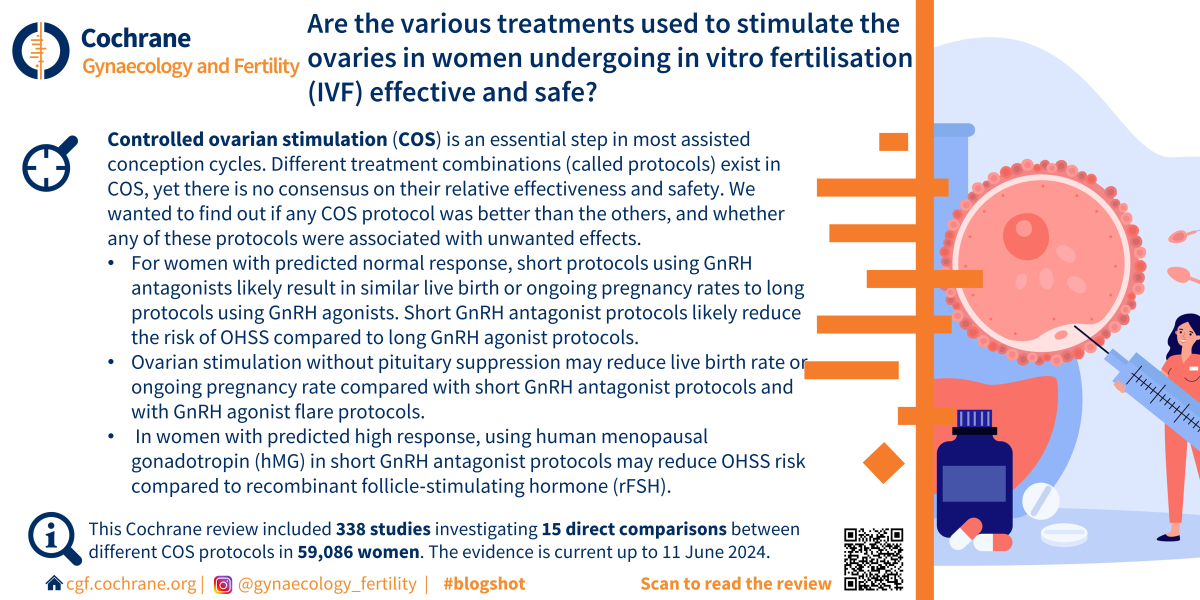
Controlled ovarian stimulation (COS) is an essential step in most assisted conception cycles. Different treatment combinations (termed protocols) exist in COS, yet there is no consensus on their relative effectiveness and safety.
Cochrane authors assessed the relative effectiveness and safety of COS protocols in clinical practice.
Key messages
• In women with predicted normal response (meaning their ovaries are expected to respond in an average way to stimulation medication), short protocols using gonadotropin‐releasing hormone (GnRH) antagonists likely result in similar live birth or ongoing pregnancy rates to long protocols using GnRH agonists, and short antagonist protocols likely reduce the risk of ovarian hyperstimulation syndrome (OHSS, a condition where the ovaries over‐respond to fertility medications and become swollen and painful, and in severe cases can cause serious illness) compared to long GnRH agonist protocols.
• Ovarian stimulation without pituitary suppression may reduce the live birth rate or ongoing pregnancy rate compared with short GnRH antagonist protocols and with GnRH agonist flare protocols.
• In women with predicted high response (meaning their ovaries are expected to produce many eggs in response to stimulation, which increases the risk of complications such as OHSS), using human menopausal gonadotropin (hMG) in short GnRH antagonist protocols may reduce OHSS risk compared to recombinant follicle‐stimulating hormone (rFSH).
Read the review on the Cochrane Library

